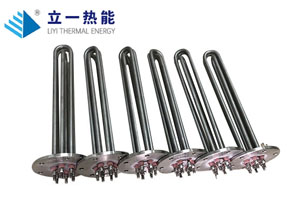The common materials for the shell of mold heating tubes are stainless steel, Engley 800 alloy, and ceramics.
1、 Stainless steel
advantage
Good corrosion resistance: Stainless steel contains alloying elements such as chromium and nickel, which give it good corrosion resistance in general humid environments and some chemical media. For example, in some injection molds, additives and other chemicals in plastic raw materials may come into contact, and stainless steel shells can effectively prevent corrosion and extend the service life of heating tubes.

Excellent mechanical performance: Stainless steel material has high strength and can withstand a certain degree of mechanical external force. It is less likely to deform during the installation, disassembly, or internal pressure changes of the mold. This is crucial for ensuring the integrity of the shape and internal structure of the heating tube, thereby ensuring stable heating performance.
Good processing performance: easy to perform cutting, bending and other processing operations. This allows stainless steel heating tubes to be customized according to the shape and size requirements of different molds, adapting to various complex mold structures.
shortcoming
Limited high-temperature strength: At higher temperatures (such as over 800-900 ℃), the strength of stainless steel will decrease, which may cause deformation of the heating tube. In some application scenarios such as die-casting molds that require high-temperature heating, their performance may be limited to some extent.
Relatively weak thermal conductivity: Compared to some other high-performance alloys, stainless steel has slightly poorer thermal conductivity. This may affect the heating efficiency, resulting in a relatively slow rate of heat transfer to the mold.
2、 Ingrid 800 alloy
advantage
Strong high temperature resistance: Ingrid 800 alloy is a high-temperature alloy that can work stably at temperatures above 1000 ℃. In some processes that require extremely high heating temperatures for molds, such as high-temperature die-casting or special glass forming molds, this alloy shell heating tube can meet the needs well.
Excellent antioxidant properties: In high temperature environments, it can effectively resist oxidation and reduce the formation of surface oxide skin. This not only ensures the stable performance of the heating tube itself, but also avoids contaminating the mold or product due to the peeling of oxide skin.
shortcoming
High cost: Due to its presence of multiple rare alloy elements and complex manufacturing process, the price of the Engley 800 alloy heating tube is relatively expensive. This makes the use of this heating tube increase production costs in some cost sensitive mold applications.
More difficult to process: Compared to stainless steel, the processing difficulty of Ingrid 800 alloy is higher. When cutting, bending, and other processing, more specialized equipment and technology are required, which increases processing costs and cycles.
3、 Ceramics
advantage
Excellent insulation performance: Ceramics are an excellent insulation material that can effectively prevent leakage phenomena. In some mold heating environments that require high electrical safety, such as around molds containing conductive liquids or dust, ceramic shell heating tubes can provide reliable insulation protection.
High chemical stability: Ceramics can resist the erosion of most chemical substances, including strong acids, strong bases, etc. In some chemical industry molds, such as reaction kettle molds for chemical raw materials, ceramic shell heating tubes can ensure normal operation in harsh chemical environments.
Good thermal conductivity: Ceramic materials have excellent thermal conductivity, which can quickly transfer the heat generated by the heating wire to the mold, improving heating efficiency.
shortcoming
High brittleness: The biggest drawback of ceramic materials is their high brittleness. It is easy to break due to external impact or slight carelessness during installation. This requires extra caution during the installation and use of ceramic shell heating tubes, increasing maintenance costs and usage risks.
Low coefficient of thermal expansion: Compared to metal materials, ceramics have a lower coefficient of thermal expansion. During the heating and cooling process, the difference in thermal expansion between the heating tube and the metal mold may cause problems such as looseness or poor sealing at the connection between the heating tube and the mold.



